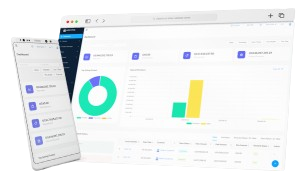Days Inventory Outstanding (DIO) is a simple yet powerful metric that helps companies understand how quickly they turn inventory into sales. Whether running a small business or managing operations in a large organization, your goal should be keeping (DIO) as low as possible, for high profits yields and achieving sustainable growth. Let’s break it down into easy-to-understand steps.
What is Days Inventory Outstanding (DIO)?
Days Inventory Outstanding (DIO) measures how many days it takes for a company or a business to sell its inventory. It shows how well inventory is managed. A lower DIO means faster sales, while a higher DIO suggests slower sales or excess inventory (Over Stocking).
Other names for DIO:
- Days Sales of Inventory (DSI)
- Days in Inventory (DII)
Why DIO Matters
DIO is part of the Cash Conversion Cycle (CCC), which measures how fast a company turns investments into cash.
The formula for CCC is:
CCC = DIO + Days Sales Outstanding (DSO) – Days Payable Outstanding (DPO)
Optimizing DIO can free up cash, cut storage costs, and lower the risk of outdated inventory.
DIO Formula
The formula to calculate DIO:
DIO = (Average Inventory / Cost of Goods Sold) × Number of Days
Example Calculation:
Imagine a company has an average inventory value of $30,000 during a year, and its total cost of goods sold (COGS) is $180,000. Using the formula:
DIO = (30,000 / 180,000) × 365
DIO = 0.1667 × 365 = 60.8 days
This means it takes the company about 61 days to sell its inventory.
Another way to calculate DIO is by using the inventory turnover ratio:
Inventory Turnover = COGS / Average Inventory
DIO = (1 / Inventory Turnover) × Number of Days
Using the same example (turnover ratio):
Inventory Turnover = 180,000 / 30,000 = 6
DIO = (1 / 6) × 365 = 60.8 days
High Days Inventory Outstanding vs. Low Days Inventory Outstanding
- High DIO:
- Inventory takes longer to sell.
- May indicate poor inventory management.
- Can increase storage costs and risk of outdated stock.
- Low DIO:
- Inventory sells quickly.
- Frees up cash for other uses.
- Reduces risk of stock becoming obsolete but may lead to stockouts if demand spikes.
How DIO varies Across Industries
DIO varies by industry due to different production and sales cycles. Comparing a company’s DIO with industry benchmarks provides valuable insights.
How to Improve DIO
- Better Demand Forecasting: Matching inventory levels to expected sales is needed. For example, a clothing retailer can use historical data and current trends to stock the right styles and sizes during peak seasons. Overestimating demand might lead to overstocking, while underestimating can cause stockouts and lost sales.
- Speed Up Sales: Simplify the sales process to move inventory faster. For instance, introducing online purchasing options or offering flexible payment plans can make it easier for customers to buy. A local electronics store might use promotions like “buy now, pay later” to encourage purchases.
- Use Inventory Management: Techniques like just-in-time (JIT) delivery
- can lower holding costs. A car manufacturer, for example, could order parts only as they’re needed for production rather than keeping large quantities in storage, saving on warehousing expenses.
- Clear Slow-Moving Stock: Use discounts or promotions to move old inventory. A grocery store might offer a “buy one, get one free” deal on items nearing expiration to clear shelf space and recover costs. Similarly, e-commerce platforms often hold clearance sales to offload older products.
- Boost Marketing: Targeted campaigns can increase demand. For example, a tech company could launch a social media campaign highlighting the unique features of a new product to drive sales. Collaborating with influencers or running limited-time offers are other strategies to attract attention.
DIO Limitations
- Context Matters: High or low DIO depends on the industry and business model.
- Seasonal Changes: Some industries see demand fluctuations that affect DIO.
- Not Enough Alone: DIO works best with other metrics like CCC, DSO, and DPO.
Conclusion
Days Inventory Outstanding is a practical tool for evaluating inventory efficiency. By keeping an eye on DIO and making informed adjustments, businesses can improve cash flow, reduce costs, and stay ahead of the competition. Regular monitoring and comparisons with industry standards ensure steady growth and success.






